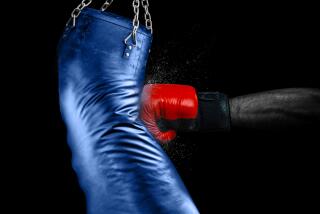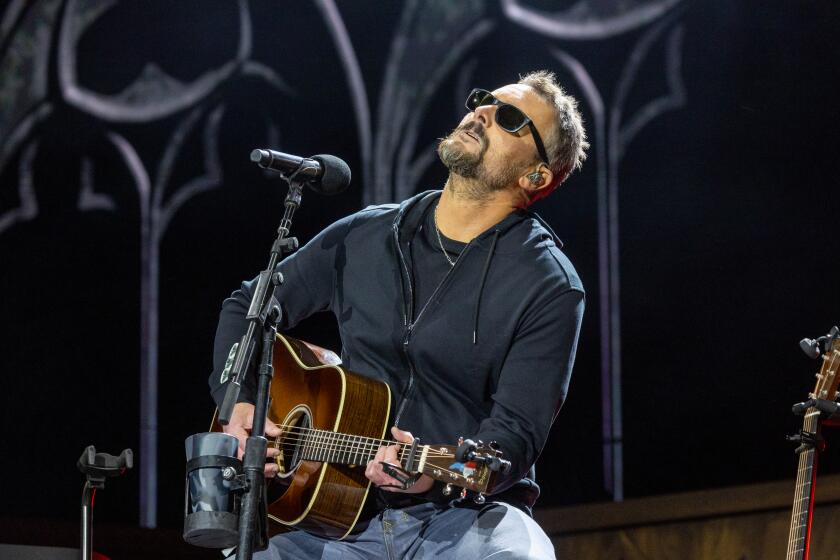‘The Valley-Westside War’ by Harry Turtledove
LOS ANGELES, the playwright and performance artist Luis Alfaro once said, is “like a bunch of little border towns, and you have to cross over those borders. If you figure out the dynamics of each little border town, you can get along well.”
He’s right and not in that snide Dorothy Parker “72 suburbs in search of a city” sort of way. This is why, in 2002, secession was such a hot-button issue, because the decentralized city makes it difficult to stake out common ground.
In a metropolis that encompasses within its borders several smaller, independent municipalities -- Inglewood, Santa Monica, Culver City, San Fernando, to name a few -- it’s not impossible to imagine a world in which every neighborhood had seceded, the map of Los Angeles becoming a mosaic of unaffiliated communities, separate and unequal, each jealously guarding its own constricted piece of turf.
Harry Turtledove’s “The Valley-Westside War” takes this idea as its starting point. In a post-nuclear world, what remains of Los Angeles has split up into a number of small countries: the Valley, the Westside, Speedro, Beautiful Downtown Burbank. Here, life changed irrevocably in 1967, when the United States and the USSR nuked each other; 130 years later, L.A., if not exactly a wasteland, has become a landscape utterly transformed by the bombs and their fire.
Turtledove is known in science fiction circles for his “Crosstime Traffic” novels, which imagine a universe in which travel is possible between parallel realities and the “home timeline,” a baseline from which the alternates derive.
This time around, the plot revolves around historian Jeff Mendoza and his wife and daughter, who have been sent from the home timeline to live on the Westside and study this ruined culture.
There’s a lot to like in such a setup, especially if, as I do, you see reality as a scrim rather than something fixed and firm. What would have happened had nuclear war broken out at the height of the 1960s? What would have survived and what would have been lost?
It’s a kind of chaos theory of fiction, in which the slightest variation leads to monumental deviations over time. In “The Valley-Westside War,” the devil is in the smallest details, in this case the wrong Russian diplomat being assigned to the International Atomic Energy Agency.
Turtledove, however, is too savvy to build a novel around policy; he’s looking for the human aftermath. To that end, he focuses on two characters: Mendoza’s daughter, Liz, a smart, mouthy teen who longs for the home timeline, and Dan, a young soldier in the army of the Valley, who falls in love with Liz after his country takes over the Westside.
The war of the book’s title is something of a misnomer, since much of the actual fighting is over by the end of Chapter 2. Instead, this is more a novel of occupation, and of the uneasy dance between Dan and Liz and their two cultures, between the possibilities the home timeline offers and the very different possibilities of this broken world.
Turtledove is at his best in evoking the particulars of the landscape: a downtown L.A. where only “[t]he stump of City Hall still stood. It looked like a candle that had burned most of the way down and then slumped over”; Santa Monica flattened into a “dead zone,” in which “[e]verything looked charred and melted, even after 130 years.”
He’s especially good on Westwood and UCLA, which Liz loves with her own odd sense of double vision -- she sees both the wreck it has become in this alternate and the thriving institution it remains at home.
“Walking up Hilgard to the UCLA campus made Liz want to cry,” he writes. “It was like walking past the skeleton of a good friend. You knew who it was. If you tried, you could picture what the person -- or the place -- had looked like alive. But all you saw was death.” This is the subtext of “The Valley-Westside War,” that we contain within ourselves all the options, that reality is what we make it, that we are all accountable in the end.
Yet this compelling construct falls apart in the execution, for too much of the book feels shoddy, even rushed.
Turtledove has a tendency to be sloppy, reminding us more than once that there are “no neatly wrapped plastic-covered packages in the butcher’s shop at the supermarket, not in this alternate. If you wanted meat, you had to deal with it yourself,” or that journeys such as the one from San Pedro to the Westside, once a mere 45 freeway minutes, now take “a couple of days . . . at least.”
It’s as if he doesn’t quite trust us to stay with him, or perhaps he mistrusts the construction of his world. That’s too bad, because he makes some cogent points about society, the way civilizations, like species, evolve.
“The Westside and the Valley weren’t just independent countries,” he notes. “People in both of them spoke English, but it wasn’t quite the same English. People from the Valley had a nasal accent that made it pretty easy to pick them out from Westsiders by ear. In another few hundred years, the two dialects might turn into separate languages.”
The power of alternate history is that it allows us to consider these possibilities, to imagine things not as they are but as they might be. Often, such a vision is dystopian; just think of Philip K. Dick’s “The Man in the High Castle,” William Gibson and Bruce Sterling’s “The Difference Engine” or Philip Roth’s “The Plot Against America.” “The Valley-Westside War” operates from a similar perspective, but Turtledove never quite pulls it off. For all that his alternative compels us, in the end it feels like an unfinished map of border towns.
David L. Ulin is book editor of The Times.
More to Read
The biggest entertainment stories
Get our big stories about Hollywood, film, television, music, arts, culture and more right in your inbox as soon as they publish.
You may occasionally receive promotional content from the Los Angeles Times.







